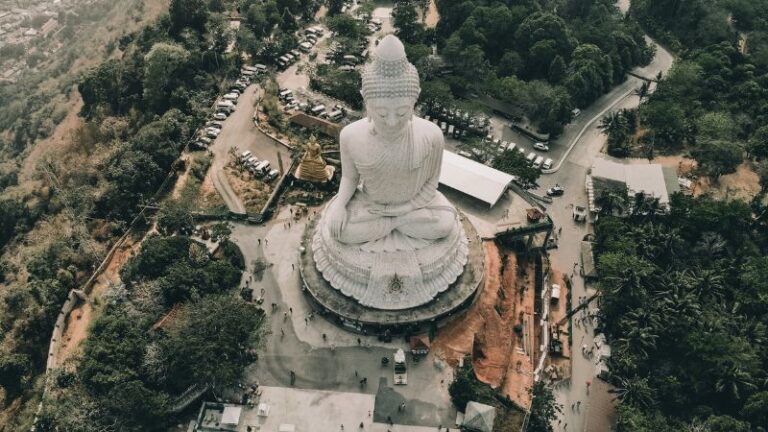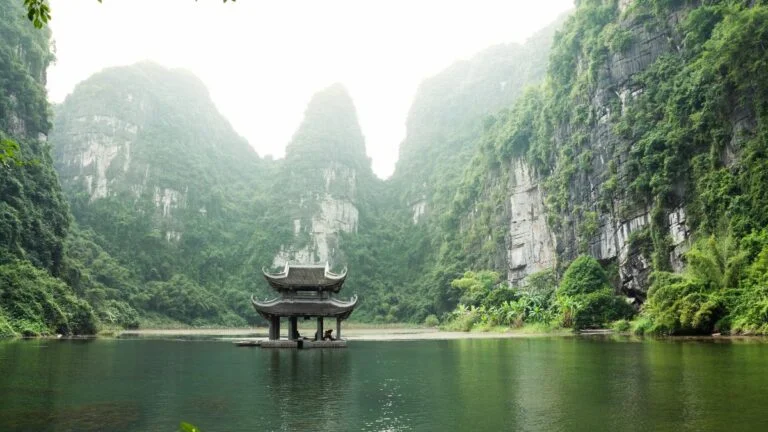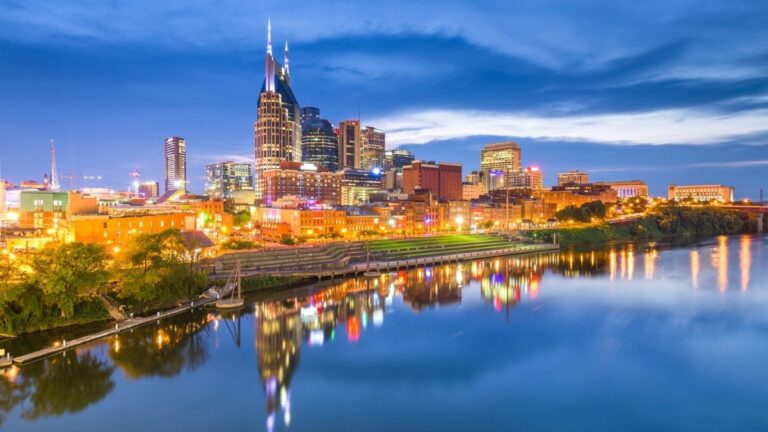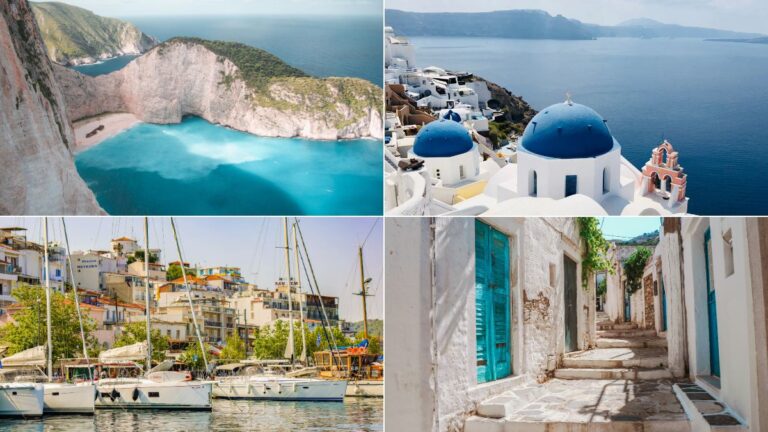Bologna Vs. Verona: Comparing Two of Italy’s Most Enchanting Travel Destinations
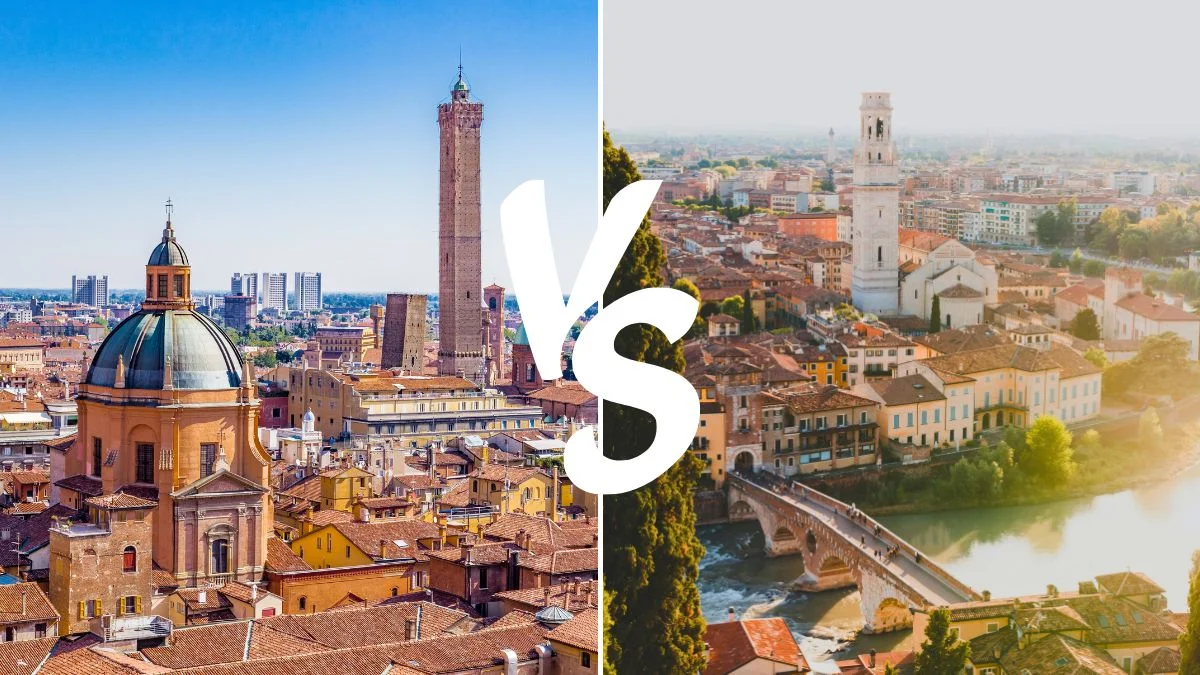
As participants in Amazon Associates and other programs, we earn from qualifying purchases. This comes at no additional cost to you. For more details, see our Affiliate Disclosure.
When one thinks of Italy, instantly the mind is drawn to its iconic cities like Rome, Florence, or Venice. Yet, nestled in the heart of this renowned European nation are two gems often overlooked by travelers: Bologna and Verona. Both cities offer a unique blend of history, culture, and charm, making them worth a spot on any traveler’s bucket list.
HIGHLIGHTS
- Bologna is ideal for those with a passion for gastronomy, intellectual environments, and political activism, offering a blend of culinary treasures and vibrant student life.
- Verona stands out as the epitome of romance, with its legacy tied to “Romeo and Juliet” and an enriched cultural scene through the Verona Arena’s performances.
- Both cities provide diverse experiences: Bologna for its academic energy and food heritage; Verona for romantic backdrops and a connection to nature.
In this article, we delve deep into the allure of both, comparing their attractions and giving you a closer look at what makes each city a standout.
A Glimpse into History: Ancient Landmarks of Bologna and Verona
Italy is a tapestry of history, where every city tells its own tale of time. Bologna and Verona are no exception, with each city bearing marks of their long and illustrious pasts.
Bologna
Known as “La Dotta” (The Learned), Bologna boasts the oldest university in the Western world, the University of Bologna, established in 1088. This city is a haven for history buffs, with its medieval towers, including the famous Two Towers, Asinelli and Garisenda, standing tall since the 12th century.
The Piazza Maggiore, surrounded by well-preserved historic buildings like the San Petronio Basilica, acts as the beating heart of this ancient city. Walking through its portico-lined streets is like stepping back in time, with every corner whispering tales of Bologna’s glorious past.
Verona
Often synonymous with Shakespeare’s “Romeo and Juliet”, Verona offers more than just the tragic love story. The Roman Arena, built in the 1st century AD, is one of the best-preserved ancient structures of its kind, still hosting operas and concerts. Then there’s the Ponte Pietra, a Roman arch bridge overlooking the Adige River, which has stood the test of time and wars.
A wander around Piazza delle Erbe will transport you through the epochs, with its marketplace that has been in function since the Roman times and surrounded by buildings that showcase a blend of Roman, medieval, and Renaissance architecture.
These cities, though different in many ways, converge in their shared ability to offer travelers a vivid journey through history. Both Bologna and Verona, with their cobbled streets and ancient landmarks, serve as living museums, inviting visitors to immerse themselves in tales of yesteryears.
Gastronomic Delights: Savoring the Flavors of Both Cities
Italy’s culinary prowess is globally renowned, and within its boundaries, each city takes pride in its unique gastronomic offerings. Bologna and Verona, despite their geographical proximity, boast distinct flavors and dishes that cater to the palates of locals and tourists alike.
Bologna
Often dubbed the “Food Capital of Italy”, Bologna has given the world some of its most beloved Italian dishes. The city’s name itself is linked to Bolognese sauce, a rich meat-based tomato sauce typically served with tagliatelle. But there’s more to Bolognese cuisine than just its famous sauce. Mortadella, a delicately flavored sausage dotted with pistachios, is another export of this food-centric city.
Add to that the delicious tortellini, traditionally filled with pork, cheese, and mortadella, swimming in a broth or served with creamy sauces. To top it all off, Bologna’s markets and food stalls, especially in the Quadrilatero area, offer a feast for the senses, with fresh produce, cheeses, and other local delights.
Verona
While Verona might be best known for its romantic tales, its culinary scene is equally enchanting. The city’s location, close to Lake Garda, influences many of its dishes. Freshwater fish, like trout and whitefish, are often highlighted in local recipes. Risotto al tastasal, a creamy rice dish flavored with tastasal (a seasoned pork mix), showcases Verona’s love for rice dishes.
Amarone, a rich red wine produced in the Valpolicella region nearby, is a must-try for wine aficionados visiting Verona. And for those with a sweet tooth, the Pandoro, a golden Christmas cake lightly dusted with powdered sugar, is a festive treat originating from this charming city.
While both Bologna and Verona carry Italy’s legacy of deliciousness forward, they do so in their own distinct style. Traveling through these cities is as much a culinary adventure as it is a cultural one, with each bite offering a taste of their rich heritage.
Artistic Treasures: The Museums and Galleries Worth Visiting
The Italian Renaissance left an indelible mark on art, culture, and history, and cities like Bologna and Verona have been pivotal in nurturing and showcasing this artistic legacy. Both cities are home to a myriad of museums, galleries, and historic sites that display Italy’s rich tapestry of art through the ages.
Bologna
- Pinacoteca Nazionale di Bologna (National Art Gallery of Bologna): This gallery houses an impressive collection of Emilian paintings from the 13th to the 18th centuries, including masterpieces by artists like Raphael and Guido Reni.
- MAMbo – Museo d’Arte Moderna di Bologna (Modern Art Museum of Bologna): A testament to the city’s evolving artistic palette, this museum features contemporary art spanning various media, from paintings to installations.
- Museo Morandi: Dedicated to Giorgio Morandi, one of Italy’s most celebrated 20th-century painters, this museum showcases his evocative still lifes and landscapes.
Verona
- Museo di Castelvecchio (Castelvecchio Museum): Located in a medieval castle, this museum boasts an extensive collection of sculptures, paintings, ancient weapons, and artifacts. Its chronology ranges from the Roman era to the Renaissance, featuring works by Veronese artists and other Italian masters.
- Galleria d’Arte Moderna Achille Forti (Achille Forti Modern Art Gallery): This gallery displays a rich collection of 19th and 20th-century Italian art, highlighting the shifts in artistic movements during these dynamic centuries.
- Juliet’s House (Casa di Giulietta): Beyond the romantic allure of Juliet’s famed balcony, this site also contains frescoes and artworks that depict the tragic love story and the epoch in which it was set.
For art enthusiasts and history buffs alike, Bologna and Verona offer more than just visual feasts. These cities encapsulate stories, emotions, and epochs within their artistic treasures, making each visit not just an observation, but a journey through Italy’s illustrious past and vibrant present.
Nightlife and Entertainment: From Verona’s Operas to Bologna’s Bars
Italy might be renowned for its ancient ruins, Renaissance art, and culinary excellence, but when the sun sets, cities like Verona and Bologna come alive with a different kind of energy. Offering a unique blend of traditional and contemporary, the nightlife in these cities promises experiences that cater to both the cultured soul and the party enthusiast.
Verona
- Arena di Verona: As one of the world’s best-preserved ancient structures, this Roman amphitheater transforms into a majestic backdrop for grand operatic performances during the summer months. The annual Opera Festival is a must-attend, with classics such as “Aida” and “Carmen” performed under the stars.
- Teatro Filarmonico: The primary theater of Verona, it hosts various performances throughout the year, from ballets to concerts, ensuring a cultured evening for its attendees.
- Local Wine Bars: Being close to the Valpolicella wine region, Verona offers countless bars and enotecas where one can sample fine local wines, accompanied by regional delicacies.
Bologna
- Via del Pratello: This lively street is the heart of Bologna’s nightlife, lined with eclectic bars, pubs, and clubs pulsating with music and vibrancy. It’s an ideal place for bar hopping and mingling with the locals.
- Cineteca di Bologna: For film enthusiasts, this cinema offers a selection of international and classic movies. With its commitment to film preservation, you might even catch a restored classic under the Bolognese sky in their outdoor screenings.
- Jazz Clubs: Bologna boasts a thriving jazz scene, with venues like Cantina Bentivoglio and Bravo Caffè offering live performances, bringing together lovers of this soulful genre.
Whether you’re looking to immerse yourself in an opera set amidst Roman grandeur, dance the night away to contemporary beats, or simply savor a glass of Amarone in a dimly lit wine bar, Verona and Bologna offer an array of nighttime activities. Their unique blend of historical charm and modern zest ensures an evening that resonates with the spirit of Italy.
The Architectural Marvels: A Tale of Two Skylines
Italy is often hailed as an architectural paradise, with each city contributing its unique silhouette to the country’s vast skyline. Bologna and Verona, though distinct in style and historical influences, both stand as testimonies to architectural ingenuity spanning millennia. From soaring towers to romantic bridges, their landscapes are dotted with structures that tell tales of empires, innovations, and artistic revolutions.
Bologna
- The Two Towers – Asinelli and Garisenda: Dominating Bologna’s skyline, these medieval towers are a symbol of the city’s architectural and historical legacy. While the taller Asinelli offers panoramic views of the terracotta city, the leaning Garisenda stands as a testament to medieval engineering.
- Bologna’s Porticos: Unique to the city, these covered walkways stretch for over 40 kilometers, showcasing a range of styles from medieval wood to Renaissance stone. The porticos not only offer architectural delight but also protection against sun and rain, making city strolls pleasant year-round.
- Sanctuary of the Madonna di San Luca: Perched atop a hill, this basilica is not just a spiritual retreat but also an architectural marvel, connected to the city by the world’s longest portico with 666 arches.
Verona
- Ponte Pietra: This Roman arch bridge, though partially rebuilt, stands as an emblem of Verona’s architectural journey through time. Its stones, eroded by centuries, overlook the serene flow of the Adige River.
- Verona Arena: While its contemporary fame is owed to the operas, this Roman amphitheater’s architectural prowess is undeniable. With its tiered seating and imposing outer walls, it stands as one of the best-preserved structures of its kind.
- Juliet’s House: Beyond the lore of Shakespeare’s heroine, this 13th-century house showcases Gothic architecture. The famed balcony, though a later addition, has become an iconic representation of romantic architecture.
Both Bologna and Verona, through their edifices, narrate tales of power, aspiration, faith, and romance. As you walk their streets, you’re not merely observing buildings; you’re stepping into chapters of a living history book, where brick, stone, and mortar come together to recount tales of ages gone by.
Local Festivities: Celebrations Unique to Each City
Festivities are the soul of a city, revealing its cultural essence and forging connections among its inhabitants. Both Bologna and Verona, with their rich histories and diverse influences, have cultivated unique celebrations that resonate with the spirit of their people and the tales of their pasts. Participating in or observing these festivals can offer travelers an unparalleled immersion into the local culture.
Bologna
- La Notte Rosa (The Pink Night): While this event spreads across the Emilia-Romagna region, Bologna’s participation is particularly vibrant. The entire city is bathed in pink—from lighting to decorations—as numerous events, concerts, and parties take place throughout the night.
- Bologna Watermelon Festival (Festa del Podone): Celebrated in summer, this festival sees locals and visitors indulging in the season’s freshest watermelons. Music, dances, and watermelon-carving contests add to the fun.
- Settimana Mozartiana (Mozart Week in Bologna): This event celebrates the life and works of Wolfgang Amadeus Mozart, who was once a member of the Accademia Filarmonica di Bologna. Every year, classical music enthusiasts gather to enjoy concerts, performances, and lectures that echo the maestro’s influence on the city.
Verona
- Verona in Love: Timed around Valentine’s Day, this event capitalizes on the city’s association with the world’s most famous lovers, Romeo and Juliet. The streets come alive with heart-themed decorations, romantic concerts, and love markets.
- Festa dell’Uva (Grape Festival): Celebrating Verona’s rich wine-producing heritage, this festival in September showcases the finest local wines. Parades, tastings, and grape-themed events mark the festivities.
- Verona Opera Festival: Though the Arena is an architectural marvel, its summer transformation into an opera hub is a sight to behold. With grand sets and world-class performances, this festival is a treat for the senses.
These celebrations, deeply rooted in the local culture of Bologna and Verona, offer more than just entertainment. They serve as windows into the cities’ souls, where traditions, stories, and modernity come together in a jubilant dance of community spirit. Whether you’re a passionate reveler or a curious observer, these festivals promise memories that linger long after the last note is played or the final light dims.
Nature and Parks: Finding Serenity in Urban Settings
In the midst of Italy’s architectural wonders and bustling urban life, the green oases of parks and natural settings provide essential breaths of fresh air. Both Bologna and Verona, despite their historic urban developments, have reserved spaces where nature thrives, offering residents and visitors serene spots to unwind, reflect, and connect with the natural world.
Bologna
- Giardini Margherita: The largest public park in Bologna, Giardini Margherita is an urban paradise replete with meadows, ponds, and age-old trees. The park is a favorite spot for picnics, jogging, or simply lazing under the sun.
- Orto Botanico (Botanical Garden): Maintained by the University of Bologna, this garden is a treasure trove of plant species. Established in the 16th century, it’s a serene place for those looking to appreciate botanical wonders and discover rare plants.
- Parco della Chiusa: Located on the outskirts of Bologna, this park, also known as Parco Talon, is nestled beside the Reno River and offers scenic walking trails, picnic spots, and children’s play areas amidst lush greenery.
Verona
- Giardino Giusti: A prime example of Renaissance garden design, Giardino Giusti combines manicured hedges with statued grottoes and panoramic terraces. It’s an idyllic setting for contemplation and offers stunning views of Verona.
- Parco delle Colombare: This park, located near the Adige River, is a habitat for diverse bird species, making it a haven for birdwatchers. With its ponds, walking trails, and native vegetation, it’s a peaceful escape from urban hustle.
- Parco dell’Adige Sud: Stretching along the southern banks of the Adige River, this expansive park offers cycling paths, open grasslands, and shaded spots, perfect for recreational activities or leisurely strolls.
Amidst the cacophony of city life, the parks and natural spots of Bologna and Verona stand as sanctuaries of tranquility. They remind us of the timeless bond between nature and urbanity and offer spaces where one can rejuvenate, reflect, and find solace amidst the verdant embrace of nature. Whether you’re an avid nature enthusiast or simply seeking a momentary escape from urban stimuli, these green refuges promise solace and scenic beauty in abundance.
Day Trips and Nearby Gems: Exploring Beyond the City Limits
Both Bologna and Verona serve as gateways to the diverse and picturesque landscapes of their respective regions. While the cities themselves are replete with attractions, the surrounding areas offer a tapestry of experiences — from serene countryside vistas to historical towns, enriching the traveler’s Italian sojourn.
Bologna
- Modena: A mere 30-minute train ride from Bologna, Modena is famed for its UNESCO-listed cathedral, gourmet delights like balsamic vinegar, and the Enzo Ferrari Museum. The city’s rich history and gastronomic reputation make it a delightful day trip.
- Parco Regionale dell’Abetone: For nature enthusiasts, this regional park in the Apennine Mountains offers hiking, skiing, and breathtaking alpine landscapes. It’s particularly mesmerizing in winter when the slopes come alive with winter sports.
- Ferrara: This Renaissance city, often dubbed as Italy’s ‘City of Bicycles’, boasts a UNESCO-listed historic center, complete with palaces, cathedrals, and the iconic Estense Castle. The town’s medieval charm and vibrant cultural scene are just an hour away from Bologna.
Verona
- Lake Garda: Italy’s largest lake is a short drive from Verona and offers picturesque towns like Sirmione and Desenzano. Whether it’s exploring medieval castles, enjoying boat rides, or simply relaxing by the lake, Garda’s diverse attractions cater to all.
- Valpolicella Wine Region: Famous for its Amarone and Ripasso wines, this region offers numerous vineyards and wineries. A day trip can involve wine tastings, vineyard tours, and exploration of quaint towns like Sant’Ambrogio di Valpolicella.
- Vicenza: Often overlooked in favor of its more famous neighbors, Vicenza is a gem of Palladian architecture. The Basilica Palladiana, Teatro Olimpico, and Villa Capra “La Rotonda” are just some of the masterpieces one can explore in this UNESCO-listed city.
Venturing beyond Bologna and Verona unveils a world of diverse experiences, emphasizing that Italy’s magic doesn’t just reside in its major cities. These day trips and nearby destinations allow travelers to delve deeper into the region’s history, culture, and natural beauty, thereby providing a holistic perspective of what Emilia-Romagna and Veneto have to offer.
The Local Vibe: Understanding the Cultural Nuances of Bologna and Verona
Delving into the heart of any city requires more than just visiting its landmarks or sampling its cuisine; it’s about absorbing its local vibe and understanding the cultural nuances that shape its soul. Both Bologna and Verona, steeped in history and tradition, are unique mosaics of experiences, attitudes, and rhythms that reflect the essence of their inhabitants.
Bologna
- Student City: With the University of Bologna being the oldest in the Western world, the city has a youthful, dynamic energy. Streets filled with students, bustling bookshops, and spirited discussions at local cafes add an intellectual vibrancy to Bologna.
- Political Activism: Historically known as ‘La Rossa’ (The Red) for its political leanings, Bologna has a legacy of left-wing activism. This is evident in its numerous social centers, political graffiti, and the spirit of community participation.
- A Passion for Food: Bolognese pride in their culinary heritage is palpable. From animated conversations about the perfect ragù recipe to the city’s reputation as the “Food Capital” of Italy, Bologna’s soul is deeply connected to its gastronomy.
Verona
- Romance in the Air: The legacy of Romeo and Juliet casts a romantic aura over Verona. From love letters left at Juliet’s house to couples wandering hand-in-hand through cobbled alleys, the city thrums with tales of love, both legendary and everyday.
- Arena’s Cultural Pulse: The Verona Arena isn’t just a historical monument but the city’s cultural heartbeat. Whether it’s the grand operas that draw international audiences or local performances, the Arena embodies Verona’s rich artistic traditions.
- Closeness to Nature: With the Adige River winding through the city and proximity to the Italian Alps and Lake Garda, Veronese have a deep appreciation for natural beauty. This reflects in their leisure activities, festivals, and the general pace of life.
While both cities boast renowned historical sites and natural beauty, it’s the intangible local vibe that often leaves the most profound impact on travelers. Understanding these cultural nuances provides a more intimate glimpse into Bologna and Verona, allowing one to feel not just like a visitor, but a part of the city’s ever-evolving tapestry.
Bologna Vs. Verona: Which City Should You Choose For Your Next Destination?
Choosing between Bologna and Verona, two of Italy’s exquisite cities, often boils down to personal preferences and what one seeks in a travel experience. Here’s a deeper dive into the distinct offerings of each city to help guide your choice:
Bologna
Bologna is the destination for those with a deep love for gastronomy and intellectual pursuits. As the home to the oldest university in the Western world, it pulses with youthful energy, making it ideal for those interested in academic environments or those looking to experience the vibrancy of student life. Its streets are a blend of spirited discussions, bookstores, and, of course, rich culinary offerings.
Known as the “Food Capital” of Italy, Bologna is a paradise for food lovers. From tortellini to ragù, its culinary scene is diverse and deeply rooted in tradition. Moreover, for those with a penchant for politics and activism, Bologna’s history as ‘La Rossa’ offers insights into its progressive leanings, seen in its social centers and community participation.
Verona
Verona, on the other hand, is the epitome of romance. It’s the city for those who dream of love stories and poetic settings. With its association with Shakespeare’s “Romeo and Juliet,” Verona exudes romance at every corner, from the famed Juliet’s balcony to its charming cobbled streets.
But beyond this legendary tale, Verona’s appeal also lies in its rich artistic traditions, primarily seen and felt at the Verona Arena, which hosts grand operas and performances, making it a cultural hub. Additionally, its close proximity to natural wonders like the Adige River, the Italian Alps, and Lake Garda offers travelers opportunities for scenic escapades and outdoor activities.
In conclusion, if your ideal vacation involves diving into intellectual discussions, indulging in some of the best Italian dishes, and exploring a city’s political heartbeat, Bologna is your go-to destination. However, if you’re seeking romantic backdrops, an immersive cultural scene, and the chance to intertwine history with nature, Verona awaits with open arms. Whatever your choice, both cities promise a rich tapestry of experiences that will leave indelible memories.
Practical Tips for Travelers: Getting Around, Staying, and More
Whether you’re venturing to Bologna, Verona, or any other city for that matter, having some practical insights up your sleeve can make your journey smoother and more enjoyable. Here are some tips tailored to travelers in Bologna and Verona:
Getting Around:
- Public Transport: Both Bologna and Verona have efficient public transportation systems. In Bologna, buses are the primary mode, while in Verona, you have both buses and a limited tram system. Ensure you validate your ticket before boarding.
- Biking: Bologna has a good network of bike paths and bike-sharing options, thanks to its student population. Verona, too, is quite bike-friendly, especially in the city center.
- Walking: The historic centers of both cities are pedestrian-friendly. In many cases, walking can be the best way to explore, offering the chance to stumble upon hidden gems.
- Taxis and Ride-Sharing: Both taxis and apps like Uber operate in these cities, but remember that in peak tourist seasons, getting a ride can take longer.
Staying:
- Location: When choosing accommodation, consider staying near the historic centers. This ensures major attractions are within walking distance.
- Budget Options: Both cities have hostels and budget B&Bs, ideal for backpackers or those on a tight budget. They also offer a great way to meet fellow travelers.
- Luxury Stays: If you’re looking for a more luxurious experience, both cities have a range of upscale hotels and boutique accommodations that provide top-notch services.
Eating:
- Local Markets: Visit local markets like Mercato delle Erbe in Bologna or Piazza delle Erbe in Verona to get fresh produce and regional specialties. It’s a gastronomic experience and a cultural immersion rolled into one.
- Tipping: Service charge is often included in your bill, but leaving a small tip for good service is appreciated.
- Water: Tap water is generally safe to drink in both cities. However, locals often prefer bottled water, especially in restaurants.
Other Tips:
- Tourist Cards: Both cities offer tourist cards which provide free or discounted access to major attractions and public transport. They can be a cost-effective option if you plan to visit multiple sites.
- Language: While Italian is the official language, you’ll find that many in the tourist sectors speak English. However, learning a few basic Italian phrases can enrich your experience and is often appreciated by locals.
- Safety: Both Bologna and Verona are generally safe for tourists. However, like in any other city, it’s wise to be cautious of your belongings, especially in crowded areas.
Incorporating these practical tips can help ensure your journey through Bologna and Verona is both enjoyable and hassle-free. Remember, the essence of travel lies in exploration, so while it’s good to plan, leave some room for spontaneous adventures!


